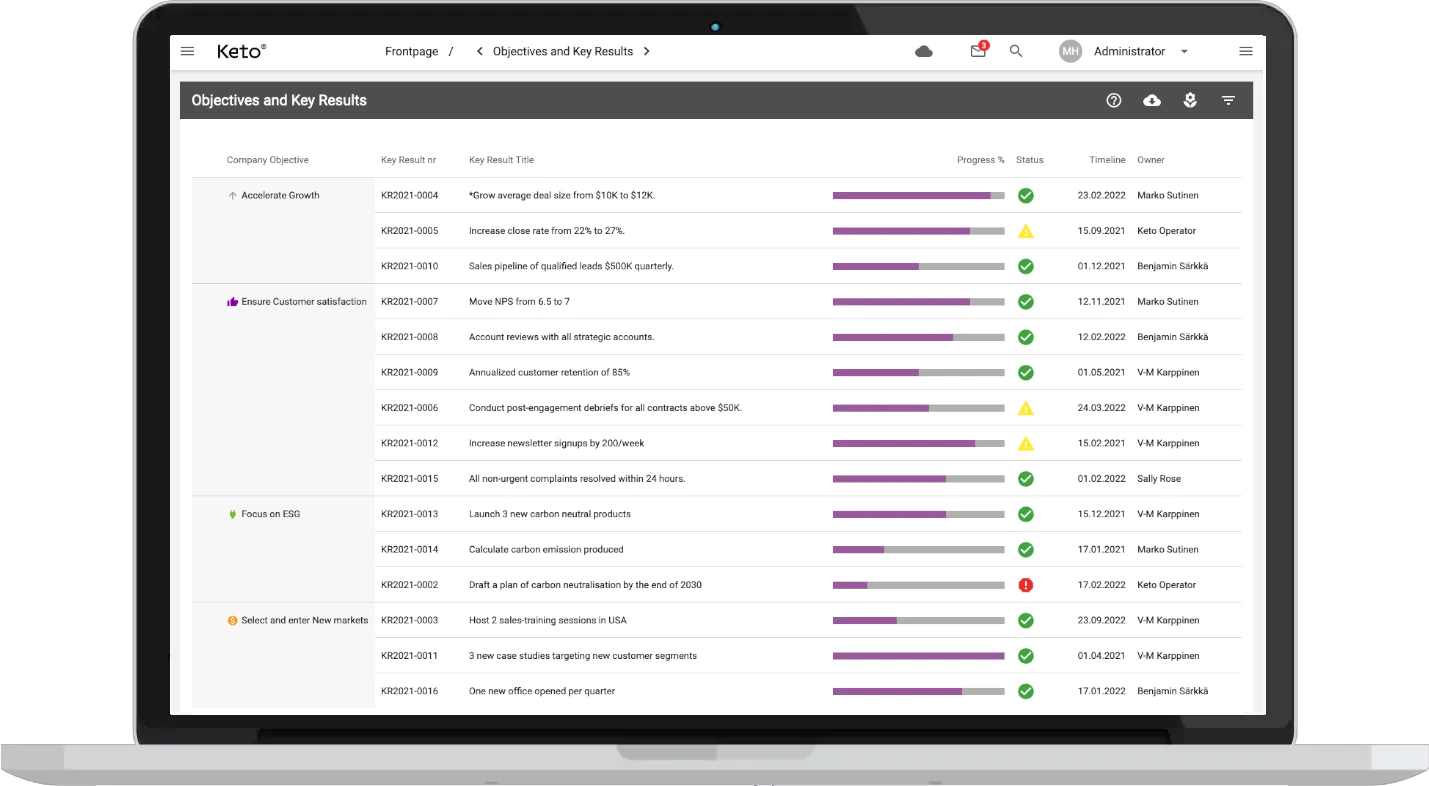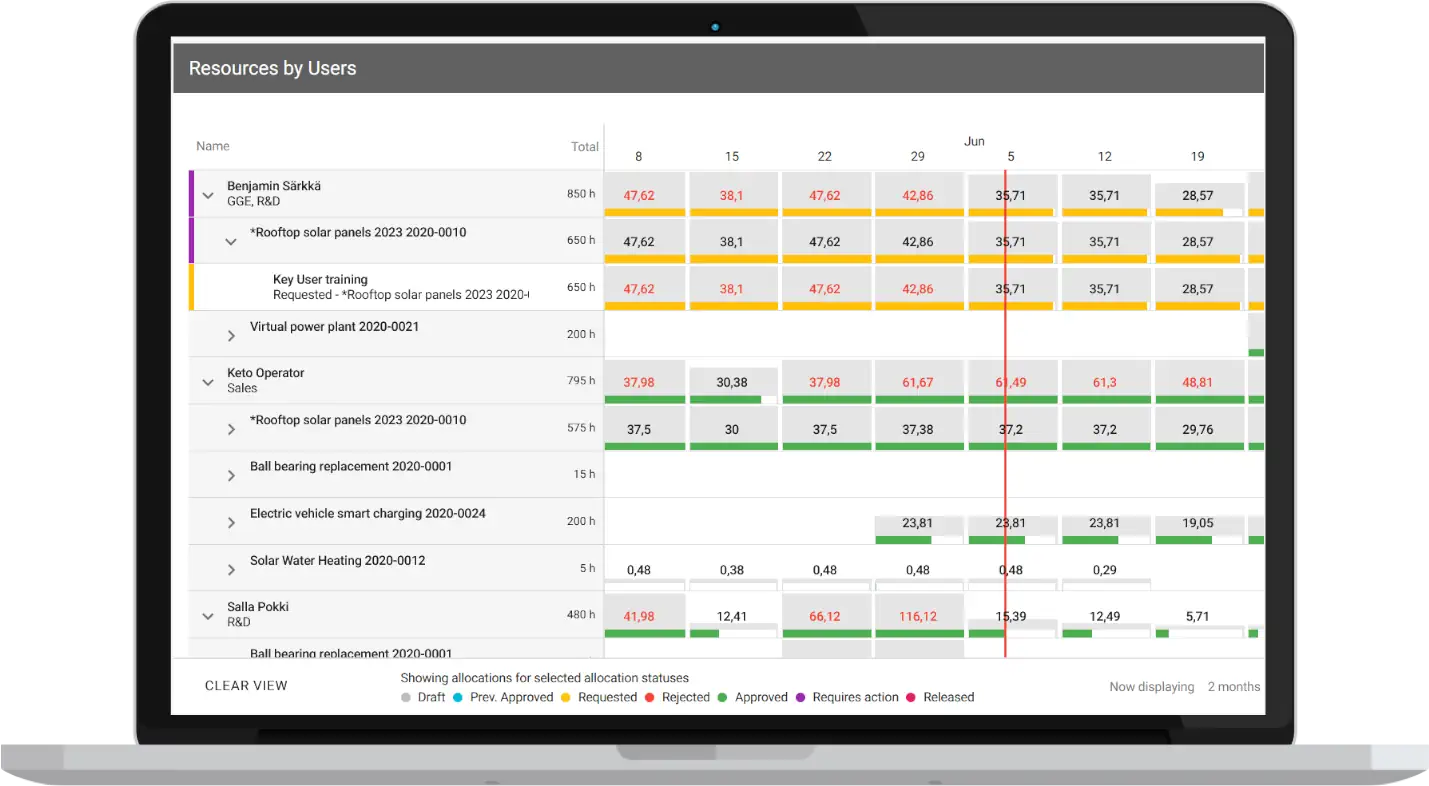
Objectives and Key Results (OKRs): The Bedrock of Strategic Portfolio Management
Objectives and Key Results (OKRs) is a vital framework utilized in goal-setting within businesses and organizations. This framework plays a crucial role in clearly defining goals and tracking the progress and outcome of these goals. The two primary components of an OKR are the Objective, detailing what needs to be accomplished, and the Key Results, measurable elements that gauge the achievement of the stated Objective. The goal here is to provide the organization with a clear roadmap to success.

Demystifying Objectives and Key Results (OKRs): The Cornerstone of Strategic Portfolio Management
The world of business thrives on strategically setting and achieving goals. A critical player in this landscape is the Objectives and Key Results (OKRs) framework. This powerful tool aligns companies around measurable and achievable goals, tracking them to fruition. However, there is much more to OKRs than meets the eye, and their influence extends far beyond the scope of merely setting and attaining targets.
Decoding OKRs: A Bridge between Strategy and Execution
At its core, the OKR framework consists of two integral components. The ‘Objective’ paints a vivid picture of what the organization aims to accomplish. This could be a broad goal that encapsulates the company’s strategic direction and purpose. The ‘Key Results’, on the other hand, provide tangible, measurable elements that indicate whether the objective has been successfully met. Each Objective is linked to 2 to 5 Key Results that are specific, time-bound, and verifiable.
For instance, if an organization’s objective is to boost the company’s sales, a key result could be a 20% increase in sales over the next quarter. Another key result could be to reduce the cost of customer acquisition by 15%. The beauty of OKRs lies in their simplicity and their ability to convert a strategic vision into measurable outcomes.
The Importance of OKRs: Driving Performance and Accountability
The power of OKRs lies not just in their ability to translate organizational goals into measurable outcomes but also in their capacity to drive performance and create a culture of accountability. OKRs act as a performance management tool, enabling organizations to keep track of their progress towards their objectives. They also help in identifying areas where performance is lagging, thereby helping the organization take corrective action promptly.
Moreover, OKRs promote a sense of ownership and responsibility among employees. Since each employee’s OKRs are tied to the larger organizational objectives, individuals understand how their work contributes to the company’s overall success. This fosters a culture of accountability and commitment to the achievement of goals.
Using OKRs to Foster Alignment and Collaboration
One of the key benefits of OKRs is that they foster alignment and collaboration across various levels of the organization. When each department, team, and individual has clear OKRs that are tied to the company’s overarching goals, everyone is aligned in the same direction. This enables cross-functional collaboration, as teams understand how their work intersects and impacts other areas of the organization.
Moreover, the transparency provided by OKRs ensures that everyone in the organization is aware of what others are working on and how they are progressing towards their goals. This facilitates better coordination, reduces duplication of efforts, and promotes a sense of collective ownership towards the achievement of company objectives.
Steering Organizational Strategy with OKRs
In the fast-paced and dynamic business environment, steering an organization towards its strategic goals is no easy task. This is where OKRs come in. They serve as the organization’s compass, keeping it focused on its strategic goals amidst the whirlwind of day-to-day operations.
By clearly defining what needs to be achieved (the Objective) and how success will be measured (the Key Results), OKRs bring clarity and focus to the organization’s strategic plan. They ensure that the strategic plan is not just a document that is reviewed once a year, but a living, breathing guide that directs the organization’s activities every day.
OKRs also ensure that the strategic plan is translated into actionable tasks. They break down high-level objectives into smaller, achievable targets for teams and individuals, making the strategic plan more accessible and tangible for everyone in the organization.
Implications of OKRs for Resource Allocation and Strategic Initiatives
OKRs also play a pivotal role in resource allocation and in steering strategic initiatives. Since OKRs provide a clear view of what the organization aims to achieve and how success will be measured, they enable the company to make informed decisions about where to invest its resources. This ensures that financial resources, personnel, and other assets are directed towards initiatives and tasks that align with the company’s strategic goals.
Moreover, OKRs provide a roadmap for strategic initiatives, ensuring that these high-impact projects are tied to the organization’s objectives and are measurable in terms of key results. They prevent the organization from pursuing initiatives that may seem attractive but do not contribute to the achievement of strategic goals. This ensures that strategic initiatives are not just about doing things right, but also about doing the right things.
When it comes to financial management, OKRs enable companies to ensure that their financial resources are being deployed effectively. By linking financial performance metrics to OKRs, organizations can keep a close eye on their financial health and make necessary adjustments to their strategy or operations as required.
OKRs in the Realm of Strategic Portfolio Management
In the field of Strategic Portfolio Management (SPM), OKRs play a crucial role. SPM is all about managing the organization’s projects, programs, and operations in a way that aligns with its strategic objectives. OKRs provide the framework for this alignment, ensuring that every project and program contributes to the achievement of the organization’s goals.
Moreover, by providing measurable key results, OKRs enable the organization to monitor the progress of its strategic portfolio continually. They offer a clear view of the health of the portfolio, indicating whether it is on track to deliver the expected outcomes or whether corrective action is needed.
OKRs and Capacity Management: Ensuring the Right Fit
Capacity management is another area where OKRs make a significant impact. By defining what needs to be achieved and providing measurable indicators of success, OKRs help organizations determine the resources they need to meet their goals.
This includes not just financial resources, but also human resources. OKRs help organizations assess whether they have the right people in the right roles, and whether their skills and capacities align with the tasks required to achieve the key results. This ensures that the organization is not just doing things right, but also doing the right things with the right people.
OKRs and Risk Management: Navigating the Road to Success
Risk management is an inherent part of any business strategy. In this context, OKRs serve as a powerful tool for identifying and mitigating potential risks. By setting clear objectives and key results, organizations can identify potential obstacles and devise strategies to overcome them.
Moreover, since OKRs provide a clear view of what the organization aims to achieve and how success will be measured, they enable the company to anticipate potential risks and plan accordingly. This proactive approach to risk management is crucial for navigating the road to success and ensuring that the organization remains resilient in the face of uncertainties.
Conclusion: The Power of OKRs in Driving Business Success
In conclusion, OKRs form a vital part of any organization’s strategic arsenal. They serve as a compass, guiding the organization towards its strategic objectives. They foster alignment and collaboration, drive performance and accountability, and enable effective resource allocation and risk management.
But perhaps the most powerful aspect of OKRs is their simplicity. Despite their far-reaching implications, OKRs are simple and straightforward, making them accessible and easy to implement for organizations of all sizes and across various sectors.
By harnessing the power of OKRs, organizations can chart a clear path to success, ensuring that every step they take brings them closer to their strategic goals. Whether it’s setting ambitious objectives, measuring key results, aligning resources, or navigating risks, the role of OKRs in driving business success is truly unparalleled.
Read next


